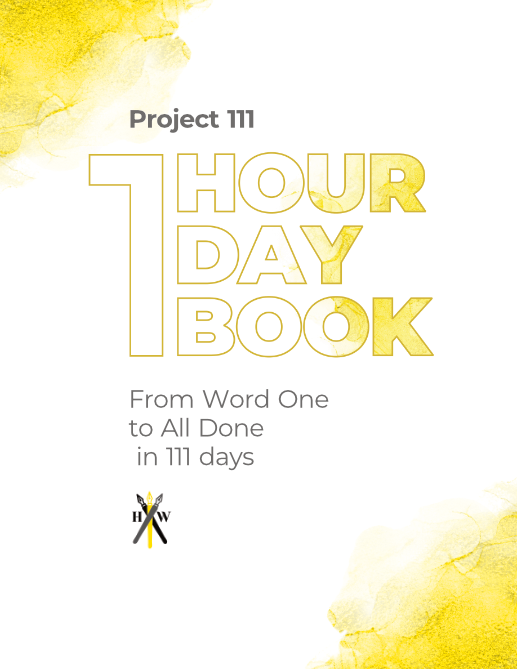If you’ve ever read a book or watched a movie or heard a story (which should be every living person old enough to understand language), odds are you’ve experienced a plot hole. No story is perfect which means that no matter how the story is told, plot holes likely lurk beneath the otherwise beautiful veneer.
If every story has plot holes, why should I be worried about them? Isn’t it alright to just write whatever story comes to mind and shoot it out to the world?
Definitely write whatever story you want, but before you submit it to the world’s criticism, you should definitely edit your manuscript. I suggest that as part of your editing process you check for plot holes and fix them to the best of your abilities. Once you’ve done all the standard editing and have done your best to fix plot holes, you can then send your novel out to the world.
But what exactly are plot holes and how do I detect them?
We’ll go over that and more in this article. Prepare your duct tape and two by fours; we’ve got holes to fix.
Table of Contents
Plot Holes: What They Are, With Examples

As mentioned before, plot holes are nearly inescapable. At some point in the storytelling process, your story will have a moment where not everything lines up, and you’ll take some short cuts to get to the next plot point. When it’s a glaring plot hole, the audience will likely see it as a moment that detracts from their enjoyment of the story.
Plot holes are like potholes in a road. When you’re driving (or riding a bike), you expect the road to be clear and smooth. Having a road like that makes the driving feel seamless. But once you start noticing some potholes, you’re suddenly more aware of the material of the road, looking out for any sort of bump or inconvenience.
Plot holes function very similarly, except you as an audience member, you can’t anticipate a plot hole like you can anticipate a pothole on the road by seeing one.
To show that all stories run the risk of having plot holes, we’ll take a look at one of the most popular media franchises of all time: Star Wars.
Plot holes exist in almost every Star Wars movie, but some of the main ones come about after the inclusion of the “prequel trilogy”. In episodes 1, 2, and 3, we see a young Anakin build relationships with R2-D2 and C-3PO. He even constructed C-3PO, so he would be keenly aware of his existence.
BUT, in the original trilogy, Darth Vader shows no remembrance of the droids, both of whom actively thwart the Empire. The viewers of the movies will note that Darth Vader should have recognized the importance of the droids (who knew a ton of personal details about Anakin Skywalker and the birth of the Rebellion) would have made it his personal goal to destroy the robots or at least “force” them into his own service.
Because these inconsistencies deal with plot, they are called plot holes. Many other articles will tell you about plot holes, especially ones from Star Wars, that are more worldbuilding problems or physical inconsistencies. A popular one takes the form of “Sound doesn’t exist in space” or “There wouldn’t be explosions” and things of that nature. These inconsistences, while potentially detrimental to certain viewers enjoyment of the story, don’t affect the plot in any big way.
Plot holes, then, deal with story elements and character interactions. So, if for some reason, the laws of physics are defied in order to get the plot moving, it then becomes a plot hole and can dissatisfy your audience. Think of all the movies and shows where the main character can hold their breath underwater for like ten minutes. This is physically impossible, and it’s a liberty taken by the story teller to get the plot moving forward.
To show further how widespread plot holes are, we’ll look at Christopher Nolan’s most popular movie, The Dark Knight. Certainly, The Dark Knight Rises has more plot holes that have received more scrutiny, but The Dark Knight is also guilty of plot inconsistency.
There may be many plot holes in the film, but one of the glaring ones for me is when the Joker is looking for Harvey Dent in his fundraising party. While searching, the Batman confronts the Joker and leaves the party in an act of heroism to save Rachel’s life. Harvey is being kept in a safe room somewhere in the Wayne residence, but while Bruce Wayne is on the rainy sidewalk caring for Rachel, what was the Joker doing? Did he not take the moment to kill some of the important people who were there? Were they not run off by armed guards? Did they not search the premises for Harvey or burn down the Wayne manor?
The Joker was a character who loved chaos and gunpowder and dynamite. The fact that he would quietly leave the party and go about his business as usual is a massive inconsistency in terms of his character, as well as an unexplained moment in the story that’s skipped over to further the plot.
It’s important to also remember that just because you’re skipping over moments in the story doesn’t mean you’re generating plot holes. If you have your characters fly from one country to another and don’t say anything about the plane ride, you’re doing something that every storyteller does, which is choose your focuses.
No one can write every intimate detail about a story, no matter how many pages and words they have. It’s just not possible, and if it were, it would be the absolute most boring story in the history of the universe. Can you imagine reading a story where in between every single thought the character has, you read about the depth of the breath they take and the sound of their heartbeat in their chest? How exhausting!
As with all things in writing, you have to find a balance between what you share and what you don’t. When authors and filmmakers take cheeky steps in this regard, however, plot holes are formed. Christopher Nolan probably didn’t want to take the time to show what was happening up at the fundraising party because of how long it would take, and this shortcut makes the movie suffer a little.
Another type of plot hole is an unfinished storyline. Plenty of stories will bring in characters or ideas and just leave them by the wayside. J. J. Abrams’s Lost is famous for not tying up story threads, some coming in right away, such as the polar bears on the island. These unfinished storylines become plot holes because they don’t ever resolve and leave a hole in the plot.
Now, as an audience, we can handle these to an extent. We think, okay, maybe that was just to be mysterious. Too many of these unresolved threads, however, will ultimately prove detrimental to the story.
How to Avoid and Fix Plot Holes

One of the most important things you can do to avoid plot holes is to really iron out your universe’s rules. You have to know your story’s universe well enough to tell a believable tale.
By knowing your universe, you can make sure that nothing impossible occurs because impossibilities are the easiest plot holes to find. If you’ve done a good job explaining the rules of your universe, breaking those rules is immediately obvious.
By fully knowing the rules of the world you’ve built, you can avoid these types of inconsistencies and tell a believable story.
This same thing is true of your characters. When you make a character for your novel, you should figure out the way they think, what they’re capable of, and how those things will change throughout the course of your story.
When you have a well-established character, the audience will know when they’re acting in a way that serves the plot rather than the history of how they act and think. This leaves a hole in the story because it becomes contrived and feels wrong. This type of plot hole is more hidden, but the audience feels it subliminally.
This type of plot hole was extremely prominent in the backlash to The Last of Us Pt. II. A beloved character from the first game has something terrible happen to them, but according to the character the audience knew, he never would have put himself in a situation where that could happen. I personally have many qualms with that theory and believe there’s enough evidence in the story to show that the character had changed (especially given the many years that passed between the two games), but the effect of a character acting opposite of their behavior to serve the plot was obvious in the outrage.
The next thing to consider is tying up loose ends. When you introduce something into your story, you should be certain that it’s necessary and will be resolved later on. A famous Russian short story writer and playwright, Anton Chekhov, wrote intelligently on this matter in what has become known as Chekhov’s gun.
Chekhov said, “Remove everything that has no relevance to the story. If you say in the first chapter that there is a rifle hanging on the wall, in the second or third chapter it absolutely must go off. If it’s not going to be fired, it shouldn’t be hanging there.”
Hemingway countered that point in his unpublished article “The Art of the Short Story”, saying “It is also untrue that if a gun hangs on the wall when you open up the story, it must be fired by page fourteen. The chances are, gentlemen, that if it hangs upon the wail, it will not even shoot.”
I offer both of these quotes to show that there is no hard and fast rule in presenting new story threads, but the idea is to make sure you fulfill all your promises. You can have decorative guns (something Hemingway probably had plenty of) without firing them. But if you introduce a character, theme, or event that is important enough to affect the plot, you need to make sure it has some sort of resolution in the story.
These methods are all good ways to avoid writing in plot holes, but what about checking to make sure that your finished novel isn’t riddled with these intrusive little monsters?
One of the best ways to revise your novel and search for plot holes is to do what’s called reverse outlining. You may or may not have written an outline when starting your novel, but the reverse outline will help you generate one backwards (as the name obviously suggests).
Reverse outlining can be done at the paragraph level, but that would be a ton of work for a whole novel. What you can do to reverse outline a novel is label the parts of it as you read, whether in your manuscript or a second document.
You should do multiple layers of labeling. You can do beginning, middle, and end/act I, II, and III. Then go deeper and find whatever plot points you want to label. This can be like inciting incident, rising action, all is lost, or whatever story model you’re following.
For each plot point, (significant or not, depending on how in depth you’d like to outline) determine what the action, reaction, and expected resolutions are of the point. When you’ve gone through your whole novel this way you should be able to pick up on most of the threads you’ve started and see if they get resolved.
You’ll also see if the plot point makes sense within the context of the story, and when you go through and take notes on the characters too, you’ll notice if the characters receive enough resolution and if they act only to serve the plot or if it feels organic.
Reverse outlining can help with plenty of other things, but it can be especially helpful for you to get a sterile, detached view of your story. If you notice elements that don’t make sense in the outline, all you have to do is zoom in and fix them.
If you find that a character acted “illegally” according to the laws of your universe, find another way to have the character fix the problem. If you realize that a thread has gone unfinished, write in a satisfying ending to it or remove it completely. If a plot element is missing a connecting piece, add that in. Quite simple!

Our 84-page book planner and 111 day writing course.
Conclusion

Plot holes are inevitable because no story is perfect. Even Moby Dick, that nearly perfect American novel, is so riddled with plot holes and mistakes, but that’s part of its charm if you ask me.
But, just because you’re going to have at least some, doesn’t mean you shouldn’t do your best to remove what you can. The worst of plot holes will completely disaffect your audience. Every audience member has a point at which they will give up on a story, and for many, it’s an irredeemable plot hole that will do it.
Plot holes are no fun to find and no fun to fix, but the efforts you put into avoiding them in the first place will pay off in the end. Try to be cognizant of all that you put into your story. Figure out if it’s going to match the rules of your universe and if you can successfully resolve it later on in the story.
Remember, you can’t tell everything in a story, but if you forget important connecting pieces, the confusion will distract from your story. Reverse outlining your novel will help you to find those moments and fix them.
Hopefully this article helps you understand plot holes a little better and know how to look out for them. A helpful practice can be trying to find them in the books you read and the movies you watch. Rather than make an inflammatory post about them on the internet though, you can figure out how you would’ve resolved it.
For more helpful articles and writing tips, check out our blog on Habit Writing!
gavinwride
Gavin is a fantasy author, short story enthusiast, and nature lover. When he’s not reading, writing, or exploring the outdoors, he is likely playing games. His board game collection is probably too big for someone living in a small apartment, and he has enough yet-to-be-played video games to fill a lifetime. His favorite book is "The Name of the Wind". His favorite author is Edward Abbey. His favorite game is "Dark Souls III", and he’d be more than happy to spend the day talking about lore, bosses, and game mechanics.
Our 84-page book planner and 111 day writing course.
